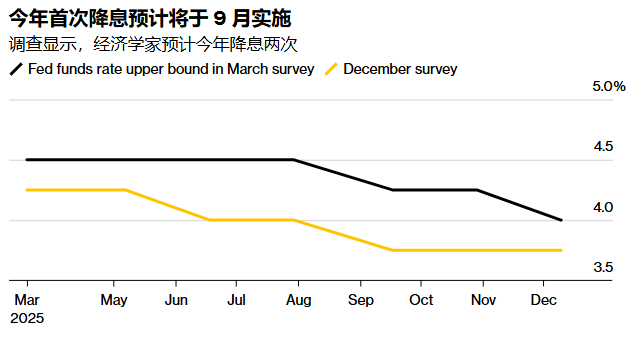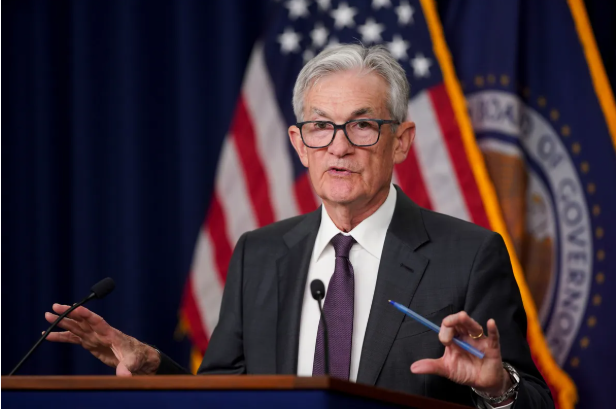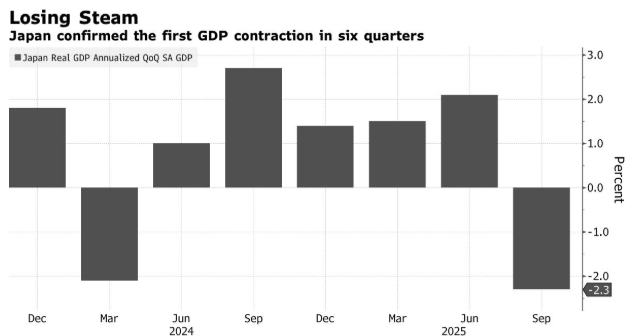Fed officials are likely to keep interest rates unchanged when they meet on Wednesday to buy time to assess how President Donald Trump’s policies are affecting an economy facing persistent inflationary pressures and growing growth concerns.
The new tariffs imposed by the Trump administration, coupled with retaliatory actions from US trading partners, have dampened consumer confidence and heightened Americans’ expectations of future inflation. As some of the tax measures were postponed shortly after their announcement, it remains unclear how the trade war will ultimately affect the economy.
This uncertainty may cause policymakers to adopt a wait-and-see attitude and be reluctant to adhere to a specific policy path.

Diane Swonk, chief economist at KPMG, said: “I think there will be quite a lot of dispersion in the path of rate cuts due to uncertainty.”
The outside world generally expects that the Federal Reserve officials will keep the benchmark interest rate within the range of 4.25% to 4.5%, but Fed watchers say that given the recent data showing a slowdown in economic activity, the post-meeting statement may change slightly.
Economists say that remarks about the uncertainty of the outlook and the balance of risks to employment and inflation may remain unchanged, but policymakers may drop the description of a “solid pace” of economic growth.
Since officials last submitted their interest rate projections in December, the economic situation has changed. Escalating tariff threats and new data, including a decline in consumer confidence, have raised concerns about the growth outlook, and stock prices have fallen sharply in recent weeks.
Swank said that more policymakers might hint at a preference for maintaining stable interest rates, which is a “natural outcome” given the uncertainty of many of Trump’s policies, especially his trade policies. “Will we face such a severe trade war that it leads to a deeper recession? We don’t know.”
Based on median estimates, Fed officials projected in the December Economic Projections Summary that interest rates would be cut twice this year. Economists generally expect that the Fed will continue to signal two rate cuts in 2025 in this week’s so-called “dot plot”.

Many Fed watchers expect that the latest projections will show officials lowering their growth forecast for this year compared with December and raising their forecast for a key inflation gauge. Some also expect officials to raise their unemployment rate projections.
“The forecast will reflect a stagflation scenario. The question is the extent of the ‘stagflation’ and ‘inflation’,” said Guneet Dhingra, head of US rates strategy at BNP Paribas. “What I’m worried about is that the Fed will again seem to focus more on the inflation part, or at least more than on the market, which could very well surprise investors.”
The Federal Reserve may support the economy by cutting interest rates in response to the slowdown in economic growth. However, as the inflation rate remains above the central bank’s 2% target, some economists doubt whether policymakers will maintain high interest rates despite the economic weakness to continue curbing price increases.
Kathy Bostjancic, chief economist at Nationwide, said: “The market has already expected the Federal Reserve to cut interest rates earlier and more frequently because they are concerned about the impact of rate cuts on economic growth. This is possible, but I don’t think the Federal Reserve is ready to send such a signal yet.”
The chairperson of the Federal Reserve has repeatedly emphasized that there is no need to “rush” to lower interest rates while the economy is still in a “good state”. He may stress that monetary policy is in a favorable position, allowing policymakers to wait for more definite signals of a weakening job market or a rebound in inflation.

Powell may be asked to clarify whether he and his colleagues view tariffs as a one-off or a persistent driver of inflation. He may also address questions about the decline in bond yields and stock prices, which saw a correction when the S&P 500 plunged 10%.
Analysts will also be watching his assessment of the deterioration in consumer confidence and the rise in inflation expectations. The closely watched long-term price expectations indicator rose for the third consecutive month in March, reaching its highest level in more than 30 years. So far, central bank officials have said that long-term inflation expectations remain stable.
Due to concerns that the uncertainty over the debt ceiling could cause friction in the Treasury market, the Federal Reserve may soon slow down the pace at which assets on its balance sheet mature (a process known as quantitative tightening) or even halt the move altogether.
Many economists and analysts expect that changes to the balance sheet policy will be announced in the coming months, with the earliest possibility being as soon as this week.


